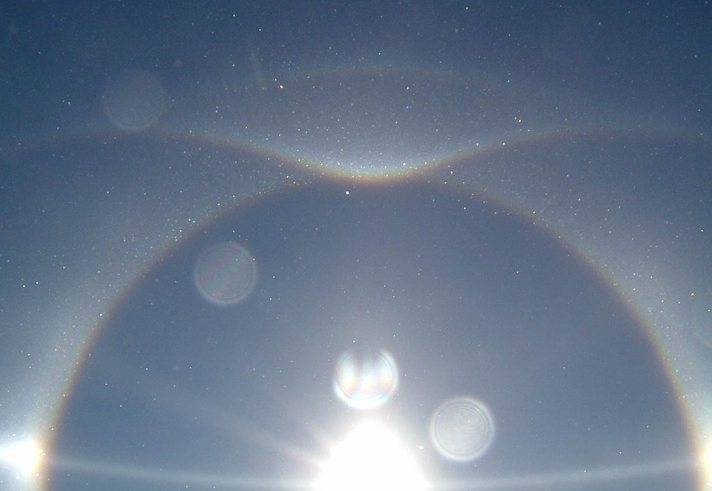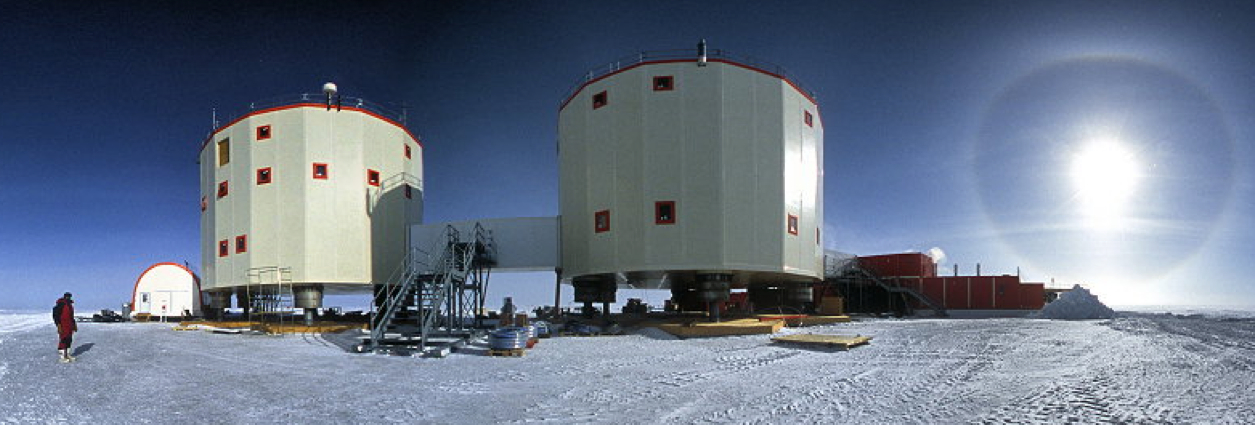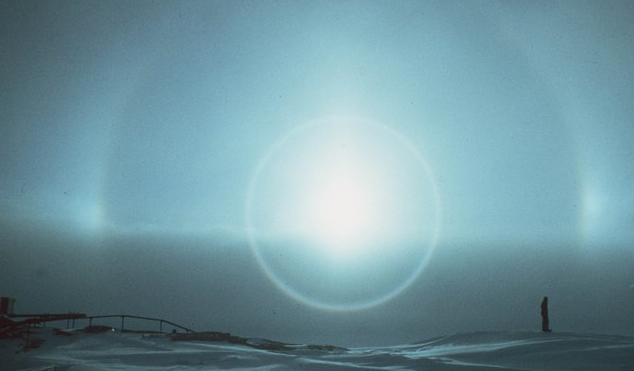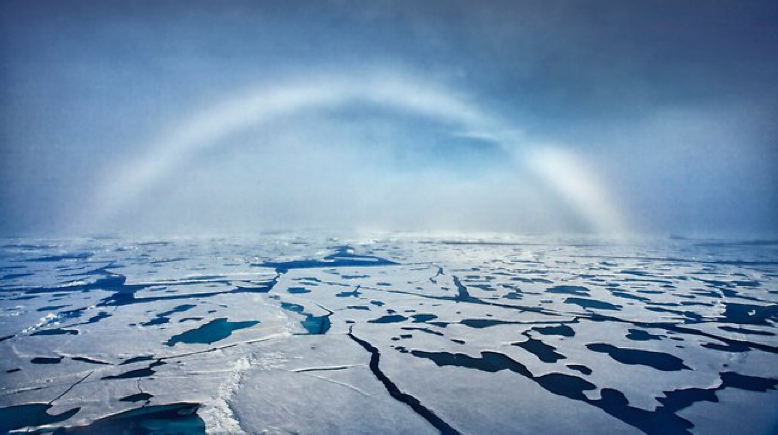One-hundred years ago today, a five-man team of Norwegian explorers “trudged through fog, bitter cold and lacerating wind” to mark the bottom of the Earth.The expedition was led by Roald Amundsen, a guy best known for wintering the first successful sweep of the Northwest Passage. After that feat, Amundsen turned his eye toward the North Pole, then one of mankind’s last remaining unclaimed and uncharted geographic conquests. But after hearing that two teams had already staked that topmost claim, there was simply nothing left, as he wrote, “but to try and solve the last great problem – the South Pole.”And so Amundsen rounded up some compatriots, ample provisions (so it was thought) and 52 sledge-pulling dogs. In early November, the team set off into oblivion on skis.You have to hand it to these dudes, even today – or rather, especially today, as Old Man Antarctica isn’t making it any easier on researchers and adventurists braving Amundsen’s frozen path to celebrate the centennial. This is a vast, Hoth-like place, after all, the driest, coldest, windiest continent. In a word: Unforgiving. Boasting the highest average elevation of any continent, this is also where the Sun, white and brilliant, looms high above from September until March.It’s these sorts of conditions, together with low humidity, an unchanging terrain and close proximity to both magnetic and geographic poles, that can give way to all manner of strange, mind-warping optical phenomena.First observed in 1780 by German climbers trekking over the Harz mountains, the Spectre of the Brocken is an observer’s shadow cast against a bank of fog below it. Backlight projects a figure’s shadow through water droplets before it, which diffract visible light to enlarged, Übermensch-y proportions. Antarctica is so bitterly cold that water vapor can condense straight out of the atmosphere. This produces minute ice crystals that come falling to the ground. During sunny stretches these crystals pop in the light like handfuls of diamonds strewn across the sky. Should any of them be perfectly oriented while catching shafts of sunlight they can produce stunning halos, as seen here.
Antarctica is so bitterly cold that water vapor can condense straight out of the atmosphere. This produces minute ice crystals that come falling to the ground. During sunny stretches these crystals pop in the light like handfuls of diamonds strewn across the sky. Should any of them be perfectly oriented while catching shafts of sunlight they can produce stunning halos, as seen here. Alongside mirages, halos are far and away the most frequent optical oddity in Antarctica. Nothing more than light rings or pillars surrounding the Sun or Moon, halos can be especially striking if formed in diamond dust.Halo is in fact a blanket term – sizes can range from simple rings (diameters of about 22° or 46°) to pillars hovering above the Sun or Moon, from Sun dogs or parhelia that shimmer out like coronas from either side of the Sun or Moon to giant, arcing rainbows.
Alongside mirages, halos are far and away the most frequent optical oddity in Antarctica. Nothing more than light rings or pillars surrounding the Sun or Moon, halos can be especially striking if formed in diamond dust.Halo is in fact a blanket term – sizes can range from simple rings (diameters of about 22° or 46°) to pillars hovering above the Sun or Moon, from Sun dogs or parhelia that shimmer out like coronas from either side of the Sun or Moon to giant, arcing rainbows. Parhelia is plural for Sun dog, a searing point of light in the sky typically riding rings or halos to either side of the Sun. Parhelion – complete halos – in South Pole conditions spring from diamond dust, the hexagonal crystals acting as prisms that bend incoming light rays at a minimum 22° deflection. You’ll see a completed ring when the crystals orient at random. More often than not, though, crystals will align vertically, thus forming a Sun dog, as diamond dust sinks through the atmosphere.Parhelia are reddish toward the side closest to the Sun. Colors range from orange to blue, though they’re muted and prone to overlap, the farther parhelia stray from the Sun.
Parhelia is plural for Sun dog, a searing point of light in the sky typically riding rings or halos to either side of the Sun. Parhelion – complete halos – in South Pole conditions spring from diamond dust, the hexagonal crystals acting as prisms that bend incoming light rays at a minimum 22° deflection. You’ll see a completed ring when the crystals orient at random. More often than not, though, crystals will align vertically, thus forming a Sun dog, as diamond dust sinks through the atmosphere.Parhelia are reddish toward the side closest to the Sun. Colors range from orange to blue, though they’re muted and prone to overlap, the farther parhelia stray from the Sun. A fogbow appears in the same way a rainbow does, by individual water droplets acting as prisms to both disperse light and reflect it back on our eyes. Only here, colors of the spectrum overlap in the tiny water droplets in fog, which switches the rainbow back to a haunting, colorless arc. It’s almost like this particular image was ripped straight from the final passages of The Narrative of Arthur Gordon Pym.Amundsen’s shot wasn’t entirely the stuff of Poe. It can be said with relative certainty, though, that if conditions were ideal the first humans to make it to the bottom of the Earth confronted a parade of ghostly, disorienting light-phenomenon.For a century ago, under crystal blue skies and temperatures of -40°F, Amundsen and his team pitched a tent as close to 90°S as their near-frozen instruments could ascertain. Excited and scrupulous, they’d spend another three days hanging around the Pole, fanning out in all directions to take sextant readings of the Sun just to be absolutely sure they’d got it all right.Remarkably, the entire crew managed to pull though on the return trek, despite food shortages, to end an epic 99-day haul. Only eleven dogs remained – those that fell weak or dead on the trail were promptly consumed. Even if he had the stones to traverse one of the last great mysteries of our hopeless little rock, “Adventure,” Amundsen once said, “is just bad planning.”ODDITY examines strange and esoteric phenomena and events from the remote, uncanny corners of technology, science and history.
A fogbow appears in the same way a rainbow does, by individual water droplets acting as prisms to both disperse light and reflect it back on our eyes. Only here, colors of the spectrum overlap in the tiny water droplets in fog, which switches the rainbow back to a haunting, colorless arc. It’s almost like this particular image was ripped straight from the final passages of The Narrative of Arthur Gordon Pym.Amundsen’s shot wasn’t entirely the stuff of Poe. It can be said with relative certainty, though, that if conditions were ideal the first humans to make it to the bottom of the Earth confronted a parade of ghostly, disorienting light-phenomenon.For a century ago, under crystal blue skies and temperatures of -40°F, Amundsen and his team pitched a tent as close to 90°S as their near-frozen instruments could ascertain. Excited and scrupulous, they’d spend another three days hanging around the Pole, fanning out in all directions to take sextant readings of the Sun just to be absolutely sure they’d got it all right.Remarkably, the entire crew managed to pull though on the return trek, despite food shortages, to end an epic 99-day haul. Only eleven dogs remained – those that fell weak or dead on the trail were promptly consumed. Even if he had the stones to traverse one of the last great mysteries of our hopeless little rock, “Adventure,” Amundsen once said, “is just bad planning.”ODDITY examines strange and esoteric phenomena and events from the remote, uncanny corners of technology, science and history.PREVIOUSLY ON ODDITY
Reach this writer at brian@motherboard.tv. @TheBAnderson
Advertisement
Brockenspectre
Diamond dust

Advertisement
Halo

Parhelia

Fogbow

Advertisement
